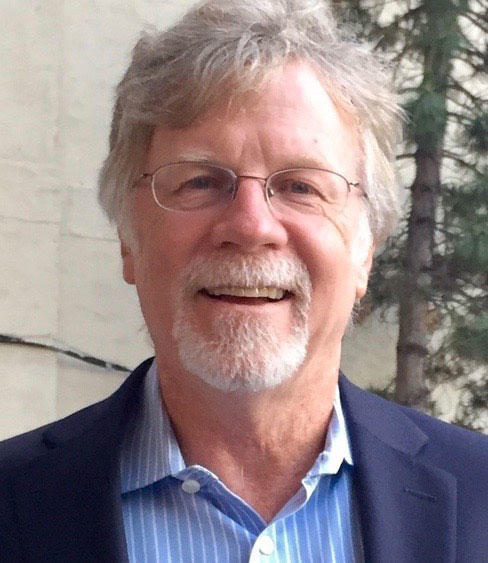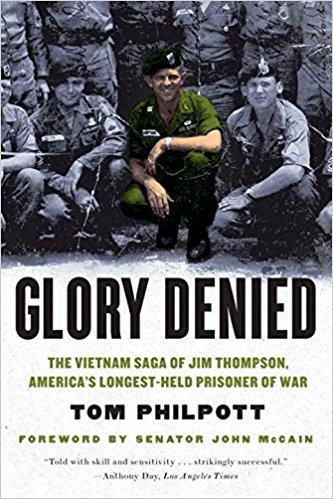Congress has passed a massive bill, nicknamed the VA Mission Act, to streamline veterans’ access to non-VA community care when clinically appropriate, create a new VA benefit of commercial walk-in clinics, and end an indefensible inequity by opening the VA comprehensive caregiver program, on a phased schedule, to older generations of veterans severely injured while in service.
The bill, which features many initiatives and officially is titled The John S. McCain III, Daniel K. Akaka and Samuel R. Johnson VA Maintaining Internal Systems and Strengthening Integrated Outside Networks Act(S 2372), cleared the Senate on 92-5 vote Wednesday and the House a week earlier by a 347-70 margin.
Such widespread support should ensure that an appropriations bill to be passed later will fully fund the package, which the Congressional Budget Office estimates will cost $46.5 billion over just the next five years. President Trump was expected to be sign the VA Mission Act by Memorial Day.
The bill’s primary architects are Sens. Johnny Isakson (R-Ga.) and Jon Tester (D-Mont.), chairman and ranking member of the Senate Veterans Affairs Committee, and their House counterparts Reps. (Dr.) Phil Roe (R-Tenn.) and Tim Walz (D-Minn.), though Walz voted against the bill after late-hour amendments to better protect VA health care against future attempts to privatize the system failed.
His effort pancaked in part because 38 veterans service organizations and military associations already had endorsed the bill after months monitoring difficult negotiations between committee leaders, committee staffs and the White House.
“We’re not privatized, we're mobilized,” said Isakson regarding the impact on VA health care as he and a string of senators from both parties outlined key details of the VA Mission Act to the press and Senate colleagues before final passage.
A tenacious Sen. Patty Murray (D-Wash.), and thousands of caregivers of veterans severely injured before 9-11, including back to the Vietnam War era, argue that the highlight of the bill is its expansion of caregiver benefits, including a monthly stipend, health insurance, respite care and training, to older generations.
These benefits, first enacted in 2010, have been available only to caregivers of severely injured Post-9/11 veterans. Since then Murray has championed corrective legislation to extend caregiver help to any qualified veteran. The senator said she felt enormous relief for these families the day the VA Mission Act passed.
“I can’t tell you the countless number of families I’ve talked to who, with tears in their eyes, told me how they had to quit their jobs, lost income, ended up putting veterans they care for into some other living arrangement, breaking up their families and [suffering] personal stress,” Murray recalled.
Passage of a more equitable law, she added, “says our country, finally, recognizes that this is a program we have a responsibility to pay for. When someone is injured in war, we say ‘We’re going to take care of them and [benefits to their caregivers] is part of it.' ”
The wait for benefits, however, isn’t over. VA launched the original caregiver program without proper staffing or controls to ensure consistency of eligibility and oversight. A condition for allowing expansion is that it be carefully planned and executed. The new law says it won’t proceed until VA certifies it has upgraded information technology and staff to closely track and administer the benefits.
“We need this to roll out the right way, with sufficient personnel and resources so no one is getting something that they later have taken away, or see benefits denied that they should have. We have to get this right,” Murray said.
When VA certifies that is ready, expansion will occur in two stages, the first to begin in early 2019 for veterans injured in service on or before May 7, 1975. A review team must verify that physical or mental injuries are so severe that the veteran cannot perform one or more activities of daily living such as feeding dressing or bathing themselves. Stage two will begin two years later, for caregivers of veterans severely injured after May 7, 1975, and before Sept. 11, 2001.
Murray said her original plan for caregiver expansion was to phase them in based on degree of need “so that families that needed it the most would get it first. But that was too hard to administer. And, again, we don’t want this to fail.”
The compromise reached, which is “a better way to ensure it works, is to have the Vietnam-era veterans phased in first. They are obviously the oldest and have been waiting the longest. Then phase in for everyone else,” Murray said.
The Congressional Budget Office estimates that 16,900 additional veterans will qualify for caregiver benefits during stage one, and another 18,100 in stage two. Given that older generations are expected to qualify for more assistance than the younger Post-9/11 pool, CBO predicts the average cost of benefits for qualified caregivers will climb by 2019 to $28,900, up from $18,300 in 2017.
The bill allows a benefit enhancement, including it for 22,000 current participants, offering new legal and financial advice services to these families.
Chairman Roe of the House Veterans Affairs Committee had endorsed a Department of Veterans Affairs proposal that, as a condition for expanding caregiver benefits to all generations, the threshold for eligibility should be tightened, except for current recipients. Veterans who newly apply would have to be found unable to perform at least three activities of daily living, not just one.
Roe had to abandon that idea in final negotiations with the Senate. But the long phase-in period for expansion, he said, will offer new opportunities to align VA eligibility standards with those used to govern other federal caregiver plans.
By tightening eligibility to what’s called a “tier 3” level of needed care, VA caregiver expansion would be capped at roughly an additional 40,000 veterans, VA projected last year. If Post-9/11 benefits are extended to all generations unchanged, as many as 188,000 veterans could become over time.
Murray promised to continue to fight to keep the current eligibility threshold.
“I’ve been adamantly opposed” to raising it, she said. “It’s an artificial way of looking at it, that doesn’t understand what an individual veteran is going through and what kind of support they need.”
Caregiver benefits, like other facets of VA health care, are not entitlements requiring mandatory spending by Congress but rather a discretionary program whose availability is governed year-to-year by level of funding. CBO estimates caregiver expansion will cost $6.7 billion over the next five years so it will have to battle for annual budget dollars like other parts of VA health care. Murray, who serves on the appropriations committee, said she is confident it will be fully funded.
“I’ve made it very clear this is a top priority, and the fact that it’s so overwhelmingly supported tells me we will be able to get the support on Appropriations to fund it at the levels we expect it to be funded at,” she said.
On the plan to reform community care, Isakson and Tester bragged that the bill will phase out “arbitrary” yardsticks used by the Choice Act – requiring waits of at least 30 days or driving distance of at least 40 miles to reach VA primary care -- to gain access to networks of non-VA physicians practicing in their communities.
The new bill will consolidate seven separate VA community care programs into one, with patient and provider to consult on use of non-VA or community care based on clinical needs. But VA also must publish new access standards, based on type of care required, within a year of the bill’s enactment.
Future columns will focus on this and other features of the VA Mission Act, including the new benefit allowing access to a commercially-run network of walk-in clinics and a new commission to dispose of underused VA health care facilities.
To comment, write Military Update, P.O. Box 231111, Centreville, VA, 20120 or email milupdate@aol.com or twitter: @Military_Update.

|
Tom Philpott has been breaking news for and about military people since 1977. After service in the Coast Guard, and 17 years as a reporter and senior editor with Army Times Publishing Company, Tom launched "Military Update," his syndicated weekly news column, in 1994. "Military Update" features timely news and analysis on issues affecting active duty members, reservists, retirees and their families. Tom's freelance articles have appeared in numerous magazines including The New Yorker, Reader's Digest and Washingtonian. |

|
His critically-acclaimed book, Glory Denied, on the extraordinary ordeal and heroism of Col. Floyd "Jim" Thompson, the longest-held prisoner of war in American history, is available in hardcover and paperback on Amazon. |





